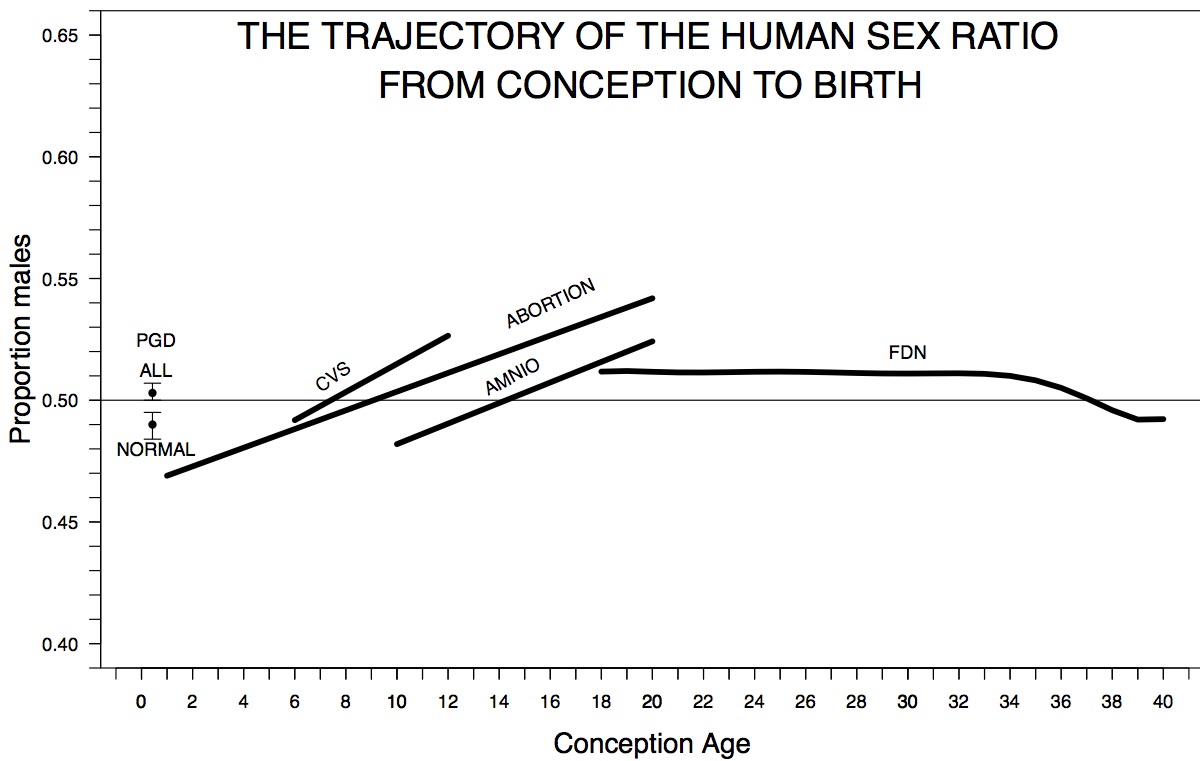Human Sex Ratio
The Human Sex Ratio from Conception to Birth
Steven Orzack, Senior Research Scientist Fresh Pond Research Institute
J. W. Stubblefield Fresh Pond Research Institute
V. R. Akmaev Berg Pharma,
P. Colls Reprogenetics
S. Munne Reprogenetics,
T. Scholl Beckman Coulter
D. Steinsaltz Oxford University,
J. E. Zuckerman Harvard Medical School
We describe the trajectory of the human sex ratio from conception to birth by analyzing data from (i) 3- to 6-day-old embryos, (ii) induced abortions, (iii) chorionic villus sampling, (iv) amniocentesis, and (v) fetal deaths and live births. Our dataset is the most comprehensive and largest ever assembled to estimate the sex ratio at conception and the sex ratio trajectory and is the first, to our knowledge, to include all of these types of data. Our estimate of the sex ratio at conception is 0.5 (proportion male), which contradicts the common claim that the sex ratio at conception is male biased. The sex ratio among abnormal embryos is male biased, and the sex ratio among normal embryos is female biased. These biases are associated with the abnormal/normal state of the sex chromosomes and of chromosomes 15 and 17. The sex ratio may decrease in the first week or so after conception (due to excess male mortality); it then increases for at least 10 to 15 weeks (due to excess female mortality), levels off after approximately 20 weeks, and declines slowly from 28 to 35 weeks (due to excess male mortality). Total female mortality during pregnancy exceeds total male mortality. The unbiased sex ratio at conception, the increase in the sex ratio during the first trimester, and total mortality during pregnancy being greater for females are fundamental insights into early human development.
Orzack, S.H., J.W. Stubblefield, V.R. Akmaev, P. Colls, S. Munne, T. Scholl, D. Steinsaltz, and J.E. Zuckerman. 2015. The human sex ratio from conception to birth. Proceedings of the National Academy of Sciences (USA) 112:E2102-E2111
There is a free Download of the PDF of the combined paper and Supplementary Information HERE.
This project is partially supported by the Eunice Kennedy Shriver National Institute of Child Health and Human Development.

 PROJECTS
PROJECTS